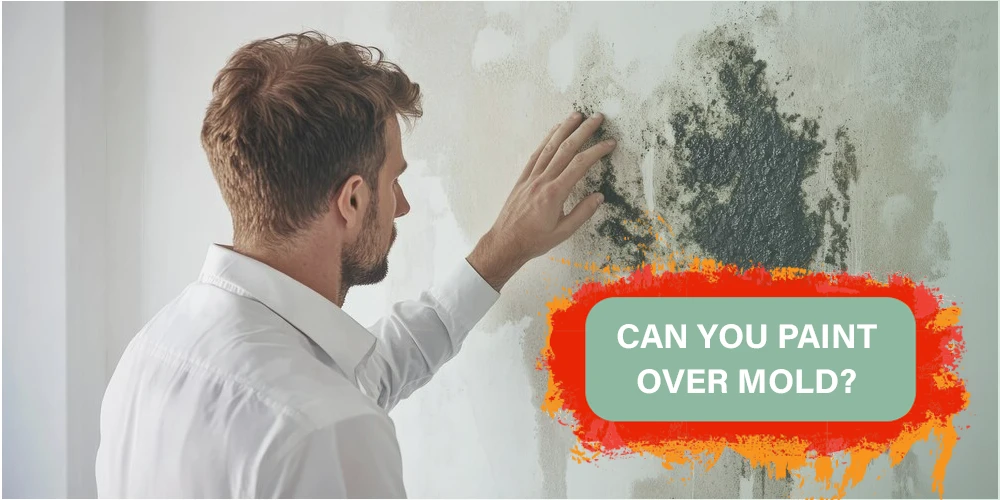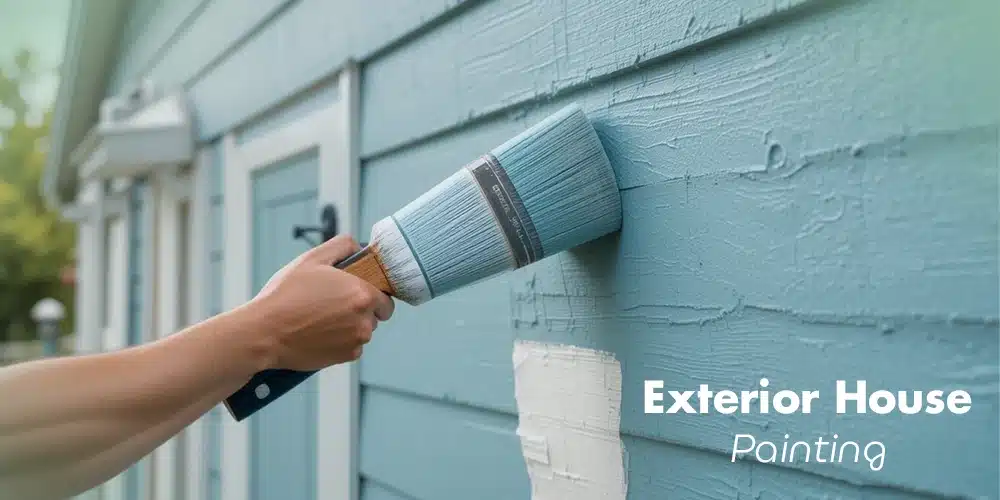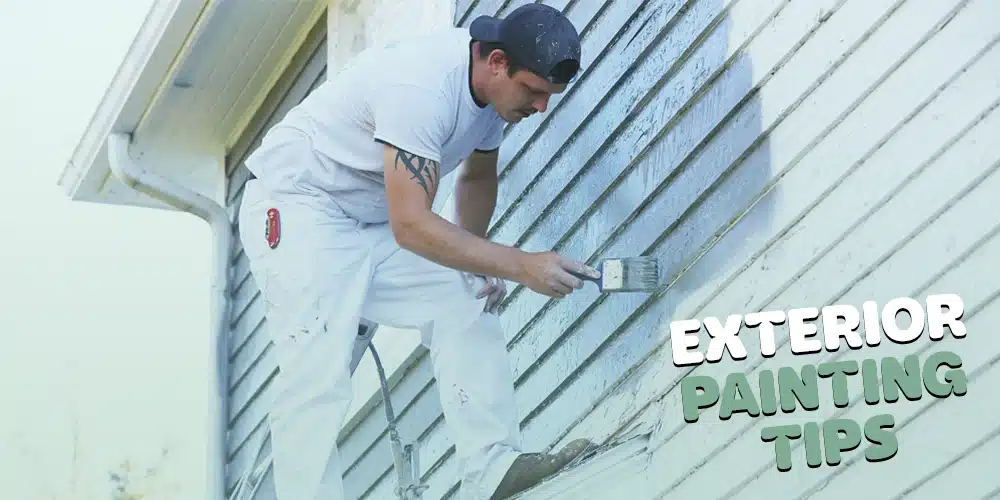Mold is a natural part of the environment and can grow almost anywhere moisture and oxygen are present. It belongs to the kingdom Fungi and lives in moist places.
Mold is a common issue in many homes. It grows in damp areas, like bathrooms, basements, and kitchens. You may be considering painting over mold if you’ve found it on your walls.The simple answer is: No, painting over mold is never a good idea. Here’s why.
Why You Shouldn’t Paint Over Mold
Painting over mold may seem like a quick fix, but it can lead to bigger problems. Here’s why you should avoid it:
Mold Will Keep Growing
Painting over mold doesn’t solve the problem. The moisture that caused the mold will remain trapped under the paint. Mold thrives in damp conditions, and by sealing it in, you allow it to continue growing behind the paint. Over time, this can lead to even more damage.
Health Risks
Mold is a health hazard. It is considered as a biological pollutant. It releases spores into the air, which can trigger allergies and respiratory problems. Painting over mold will not stop it from spreading these spores. In fact, it may make the situation worse by disturbing the mold when you apply the paint.
Paint Will Peel and Bubble
Mold can break down the structure of paint. Even if you paint over it, the mold will cause the paint to peel, crack, or bubble. You’ll end up with a poor-looking finish and a recurring mold problem.
How to Deal with Mold or How to Paint Over Mold
To properly handle mold, you need to remove it first. Here’s how to do it safely and effectively.
Step 1: Clean the Mold
Start by cleaning the area. Use a mold remover or a mixture of bleach and water (1 cup bleach to 1 gallon of water). Scrub the affected surface thoroughly. Be sure to wear gloves, a mask, and eye protection to avoid exposure to mold spores.
Step 2: Dry the Area
After cleaning, make sure the surface is completely dry. Mold thrives in moisture, so it’s essential to dry the area before moving forward. You can use fans or dehumidifiers to speed up the drying process.
Step 3: Fix the Moisture Problem
Mold requires water. No water, no mold. Identify and fix the cause of the moisture. This could be a leaky pipe, poor ventilation, or high humidity levels. Repair leaks and consider installing a dehumidifier or improving airflow in the area to prevent mold from returning.
Step 4: Apply Mold-Resistant Paint
Once the mold is gone and the surface is dry, you can apply paint. Use a mold-resistant primer and paint. These products contain ingredients that prevent mold from growing and spreading, offering long-term protection.
Moisture-Resistant Paint and Mold-Resistant Paint: Which One Should You Choose?
Moisture-resistant paint is designed to prevent water from penetrating surfaces. Mold-resistant paint goes a step further. It not only resists moisture but also contains special antimicrobial agents that prevent the growth of mould and mildew.
For homes with high humidity or occasional dampness but no visible mold, moisture-resistant paint is usually sufficient. It creates a protective barrier that prevents water damage and staining. However, if mold has been an issue or you’re concerned about it, mold-resistant paint is the better option. It will give you added protection by tackling both moisture and mold growth.
Read More:Limewash Vs Whitewash
How do molds spread?
Mold spreads by releasing tiny reproductive cells known as spores, which float through the air. These spores are usually too small to be seen without a microscope (measuring between 2-10 microns) and are found naturally both indoors and outdoors. Some molds produce spores that are easily disturbed and settle again with each disruption, while others release sticky spores that cling to surfaces and can be dislodged by brushing or direct contact.
Spores can remain viable for years after being released. Even if the spores are no longer alive, the allergens they carry can remain active and continue to cause allergic reactions for an extended period.
Is it Safe to Paint Over Black Mold?
Painting over black mold is never a safe solution. Mold, especially black mold, can cause serious health issues, including respiratory infections, asthma flare-ups, and allergy symptoms such as itchy eyes and difficulty breathing.
Black mold is particularly dangerous for people with mold allergies or compromised immune systems, as it can worsen their conditions. Simply painting over mold on surfaces like drywall or wood doesn’t eliminate the problem. The mold will continue to spread and release harmful spores, putting everyone in the household at risk. It’s crucial to properly remove the mold and address the moisture issue to protect your health and home.
Can You Paint Over Mold on Wood?
Yes, you can paint over mold on wood, but only after proper cleaning and preparation. Wood is particularly vulnerable to mold because it’s porous and can trap moisture, making it an ideal breeding ground for mold. Here’s how to handle mold on wood:
- Clean the Mold: Start by cleaning the wood surface thoroughly with a mold remover or bleach solution. Scrub away all visible mold and wipe down the area.
- Dry the Wood: Make sure the wood is completely dry before you proceed. Mold needs moisture to grow, so drying the wood is crucial.
- Treat the Wood: If necessary, treat the wood with a mold-killing solution to ensure all mold is eradicated.
- Prime and Paint: Once the surface is clean, dry, and treated, you can apply a mold-resistant primer like Kilz. After the primer has dried, finish with a mold-resistant paint to protect the wood from future mold growth. Must see: How Long Does It Take for Paint to Dry & Cure?
Can You Paint Over Mold with Kilz?
Kilz is a popular brand of primer known for its ability to cover stains and odors. However, while Kilz may help seal over mold and mildew, it does not remove or kill the mold. Simply painting over mold with Kilz or any other primer is not a solution. Mold needs to be properly cleaned and removed before you can safely apply any paint or primer.
Using Kilz after removing the mold can be a good choice, as it helps block stains and prevent future mold growth. But remember, the key is to address the root cause of the mold—moisture—before applying any primer or paint.
Choose Aaron Painting and Remodeling for Home Care
Mold is a serious issue that requires proper attention. Simply painting over it won’t fix the underlying problem. Thorough mold removal, addressing moisture issues, and using the right products are essential steps in ensuring a healthy, safe home. For expert help with mold removal, painting, and remodeling, trust Aaron Painting and Remodeling. Our team is dedicated to providing top-quality services and ensuring your home is both beautiful and mold-free.
For all your needs, rely on your Local Painting and Remodeling professionals to get the job done right.



